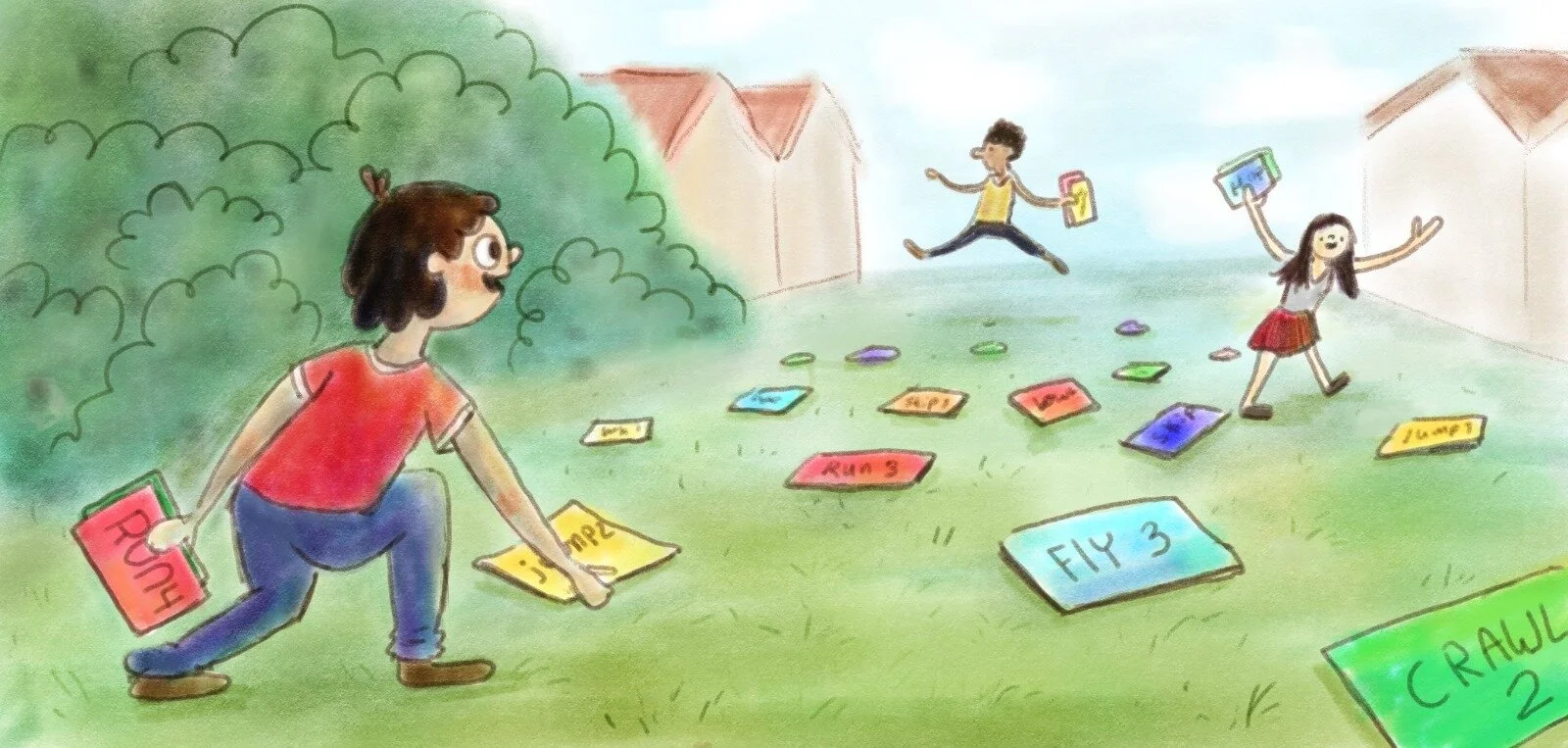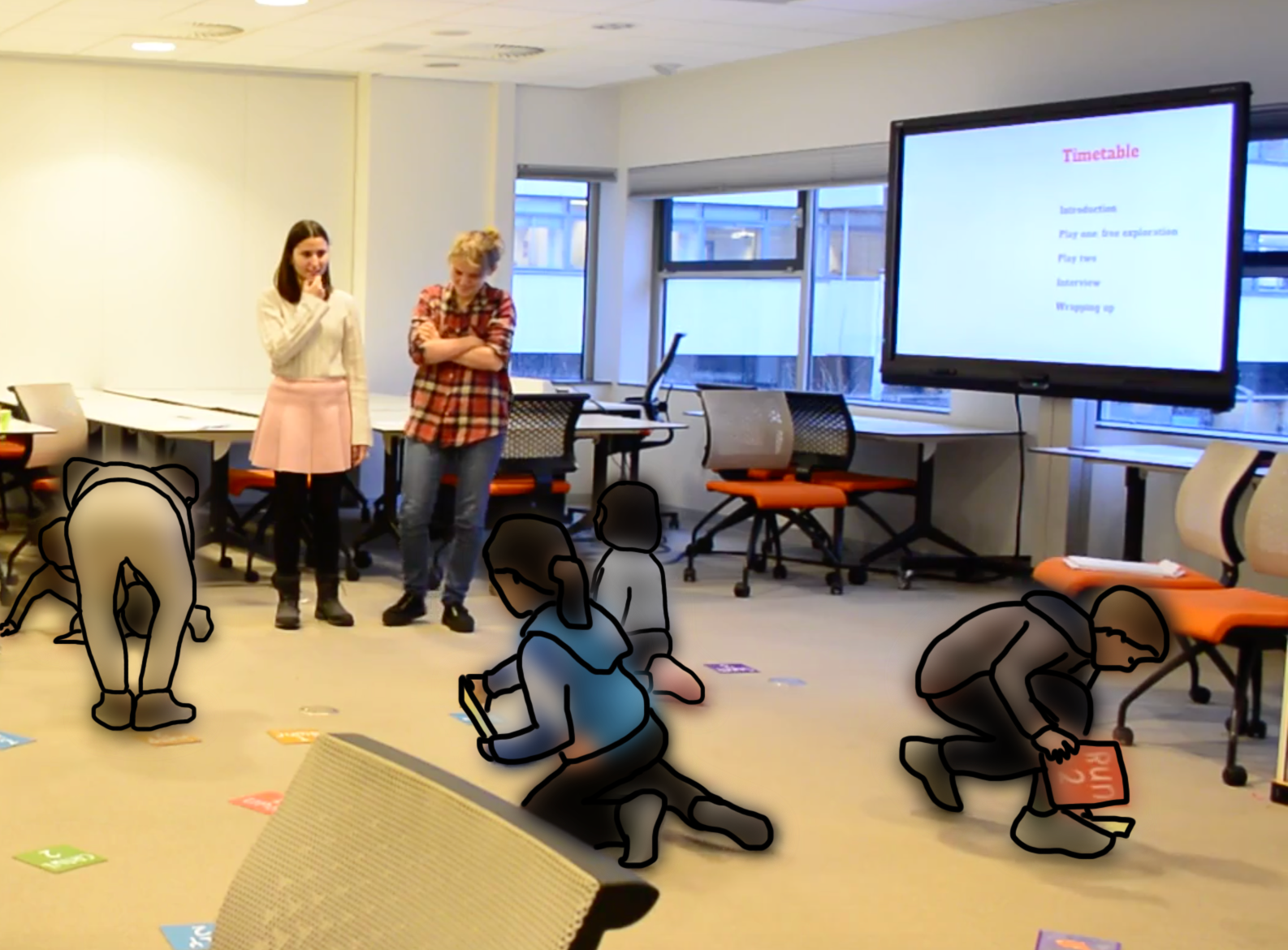ZOOLYMPIC
A game for physical play, imagination and creative thinking
Design for play | Design for children | Physical play
Group project: Etse Tselik | Gemma Driessen | Xingyu Yang 2019.01
Cooperation: International School Delft
My work Literature review. Concept generation. Prototype making. User test. Part of report writing
INTRODUCTION
This is a project focusing on play both in theory and practice. The assignment was given at the beginning of the project:
“Create a (partly) physical design that invites children to connect and integrate collecting, curating and movement activities as free play, which can be distributed through a brand loyalty campaign for a supermarket while aiming for play with optimum movement per gram of object.”
VISION
Target user
We choose children from 6 to 8 as our target group because from the age of 7 rule play is popular amongst children (Gielen, 2018).
Starting point
Our grop was interested in the contrast from the assignment — the big movements children were supposed to make and the small items that are required for a brand loyalty campaign.
So, the question arose: “how can small items form a big playground?”. With this question as the starting point, we reviewed some classic plays from our childhood and found the fact that collecting itself was already a movement. Then the task is to make collecting playful. While our vision is to trigger children’s creative thinking and distract them from the screens (tv, smartphone etc.), imagination and creative thinking would be the magic to transfer collecting into play.
Design goal
Finally we reached to our design goal: Design a game set, which uses small pieces to create a bigger space, engaging kids aged 6 to 8 in physical activities through instinctive movements of imagination and creative thinking. (The game also triggers them to play in groups, so the experience can be a common memory for the children, which reinforces the supermarket branding. )
DESIGN
Ideation
Based on our design goal, we generate our concepts in the Active-Imagination and Active-realistic quarter of Child/behaviour type quadrant for the kids above 6 years. (Gielen, 2010).
Cardboard, wires and dices are used to create prototypes. We tested the game ourselves by role-playing it as children to detect bugs and required improvements (Long, 2009).
Final design
The design consists of cards and a package with simple illustrated instructions. There are five randomly distributed cards in every package. The cards have a number and an action on it. The action is either jump, fly, swim, run or crawl and the number is one, two or three. The other side of the card has a picture of an animal that performs this action.
JUMP
FLY
SWIM
RUN
CRAWL
Cards of the same colour and numbered 1 to 3 compose a complete image, which creates a sense of completion.
There are three pictures for each action. For instance, a card that says “crawl” may have a picture of a snake, turtle or crocodile. The number on the card corresponds with the credit of the animal, the crocodile is 3 while the snake is only 1. Furthermore, each action is coded with a different colour. The animals show strength and power which appeals to boys but are drawn beautifully and softly which appeals to girls
Some decisions were made considering the state of flow model (Csikszentmihalyi 1979). We try to keep the balance of complexity and simplicity so that children can together create a flow and enjoy themselves in it.
The variety of animals enriches space of imagination.
The movement type and numbers are limited to avoid a complex game.
Play rules
1. spread the cards around on the floor
2. Everyone grabs one card
3. Perform the action on it in the way the animal would. Example (e.g., jump 3 times like a kangaroo)
4. Where you land take a new card and perform that action
5. When all the cards have been picked up, add the points on your cards to see who has the most points.
USER TEST
Research question
Will the participants understand the game with the current guidance?
How will they feel at each stage of the game?
Will they interact with each other during the play?
Will they want to play the game again?
Risks within the game
Set up
Two play sessions, six participants each session (children from Delft primary school)
Data collecting techniques: Video recording, audio recording, interview
Observer: Etse Tselik, Gemma Driessen
Facilitator: Xingyu Yang
Process
participants were first encouraged to explore the game in their own way without intervention.
The team members explained the game rules and invited them to play based on these rules. During the session, two team members observed the children’s behaviour and one team member was there to offer help or facilitate children who had difficulties participating in the game.
After the playing sessions, the children were divided into two groups for interviews.
RESULT ANALYSIS
Analysis of play
Will the participants understand the game with the current guidance?
The core of the game - making movements - is easy to understand for children. However, children need more detailed instructions to take all the elements (action, number, animal) into consideration when making movements. The game engages kids in physical activities spontaneously. The actions and animals encourage them to use imaginations while playing. Some actions like ‘swim’, ‘fly’ trigger them to think creatively about how to make the movements. However, after opening the package, the illustration was often destroyed which meant they could not go back to it. Also, they didn’t try to make a plan about the playground layout.
How will they feel at each stage of the game?
The game involves multiple play types: movement play, construction play, success play, role and fantasy play. Although some aspects of the game might take some time to explore, different children can find their own joy within the play. Because of the openness of the cards, children can also explore new games with them, like memory games or collecting the same cards. Now, the goal of the game is to collect most points, which leads to competition. The kids who enjoy the imagination part more might be affected and get less fun from the process.
Will they interact with each other during the play?
They might role play as animals on the cards and chase or fight (the boys) with others. However, after the rules were explained, they mainly focused on collecting cards and barely interacted with others. During the first session, there was a boy telling a less active girl to make movements. Also, some kids asked if others have specific cards while they tried to collect a set of cards.
Will they want to play the game again?
All the kids thought the game was fun and would like to play again. Also, one girl mentioned that the game was tiring so she need some time to relax before play again.
Risk analysis
Four potential risks are defined and put in the table from D. van Aken et.al. (Handboek ontwerpen van veilige producten, 1996), only the used parts of the table are shown here.
RECOMMENDATIONS
A clearer instruction
The instruction of the game need be clearer and more detailed. Also, instruction should be attached to the package in a way that it is not easy to be destroyed and draws the attention of the user.
Making the collecting more engaging
The pictures of one set could be more connected so children better understand that they could combine those cards. The cards with number 3 could be designed more special and rarer, for example, the animals can have some gold sparkly elements. Then the hierarchy might be more noticeable, and children could get more engaged in collecting.
Triggering interactions between children
The cards can involve some elements triggering players’ interactions or slowing down the play. It might be a good idea to have a different goal in the main game and have the competition as a variation. Therefore, children could focus more on the process instead of the competition or the results.
About the card’s quality
size, shape and the thickness of the cards should enable children to jump on it without the risk of falling or spraining their ankles.
The material should be rough, so children won’t slip down while stepping on the cards.
To prevent children from getting hurt by throwing cards to others, the edge of the cards should be rounded and the cover should be soft.
The children should be able to carry the cards without getting tired however the weight of the cards should defend them from being blown away by wind.
As for the physical qualities, the cards are of simple shapes. If they are designed foldable, the cards can be smaller and easier to handout by the supermarket.





















